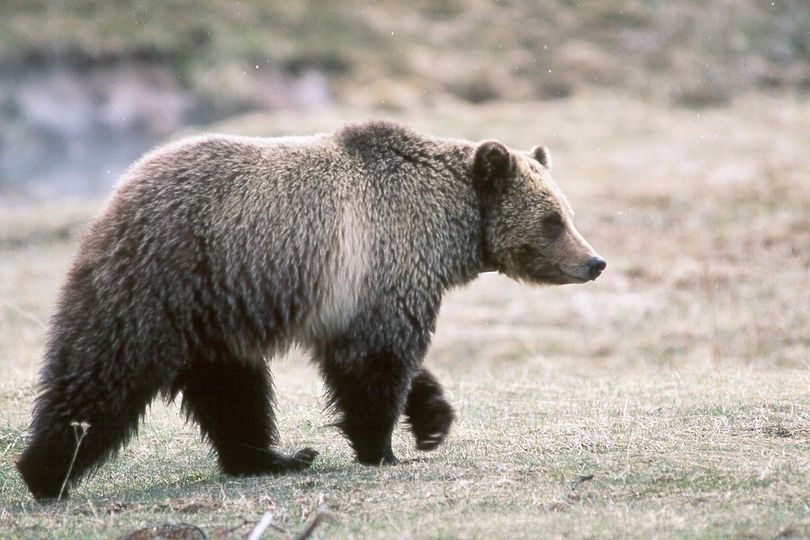Grizzly bears ranging into Montana’s Big Hole Valley

THREATENED SPECIES -- Grizzly bear sightings have been confirmed on several occasions this summer in the Upper Big Hole River area — for the first time in about a century, according to a Big Hole Watershed Committee news release.
Kevin Frey of Montana Fish, Wildlife and Parks confirmed photographs and tracks seen this summer are of a grizzly bear.
"It's hard to say if we are seeing one bear or multiple bears at this point, but the range has been near 40 miles across the Upper Big Hole. That's not surprising. These bears can roam a great distance," he said.
The Montana Standard reports:
The most recent encounter was this week by the Big Hole Watershed Committee range rider. The ranger rider program helps to alleviate conflict between predators and livestock on federal grazing allotments with both ground patrol and game cameras. This week the game camera revealed a new guest — one sub-adult grizzly bear crossing a stream.
According to the news release, the Big Hole River area is not a place people expect to see a grizzly bear, and in fact, most people in the area operate under the assumption that grizzlies are not present. That's for a good reason, since grizzlies have not been seen in the Big Hole watershed for roughly a century. Grizzly populations to the north and south have recovered considerably in recent decades, leading to bears dispersing into historic range.
People who encounter grizzly bear activity are asked to provide documentation with photos of bears or tracks and a location to Montana Fish, Wildlife and Parks.
People are also warned to always "Be Bear Aware." That includes being alert, hiking or hunting in groups or with a partner, making noise, carrying bear spray, and practicing proper food storage and carcass storage. These practices are known to lessen the chance of a serious encounter with grizzly bears.
The Beaverhead-Deerlodge National Forest agency has a Food Storage Order in place to help users avoid conflict with bears.
The grizzly bear presence in the Big Hole is a sign of their overall population recovery, according to the release. The Big Hole River Watershed is geographically sited between two distinct grizzly bear populations — the Northern Continental Divide Ecosystem in northwest Montana and Greater Yellowstone Ecosystem to the south.
The idea of grizzly bears reappearing in the area can be unsettling.
"We knew grizzly bear presence in our area was only a matter of time," said Dean Peterson of the Big Hole Watershed Committee and rancher in the Upper Big Hole.
"We have had predator conflict programs in place for several years, including range riders, livestock guard dogs, and removal of attractant such as carcasses. Our primary focus has been with wolves, but these programs easily translate to living with grizzlies and are important for supporting producers living and working with predators."
Human-wildlife conflict resolution programs operate successfully across the region where grizzly bears are present, aiding communities in coexisting with large predators such as grizzly bears. Kris Inman of the Wildlife Conservation Society and partner in the Big Hole Watershed Committee Predator Conflict programs said, "It's good to be proactive and learn from other areas, like the Blackfoot, to be ahead of potential conflicts between predators and livestock."
People and Carnivores' Steve Primm added, "Living with grizzlies can be a challenge. Conflict prevention efforts built on local knowledge and local leadership are the best way for meeting that challenge."
The Big Hole Watershed Committee Wildlife program operates in partnership with Montana Fish, Wildlife and Parks; the US Forest Service; Wildlife Conservation Society; People and Carnivores; and local ranchers.
Where from? State wildlife biologists aren't ready to say whether the grizzly bears spotted this year in the Upper Big Hole originated in the Yellowstone ecosystem or traveled from northern Montana, reports the Helena Independent Record.
